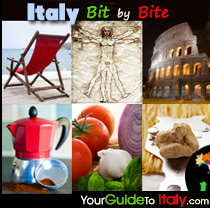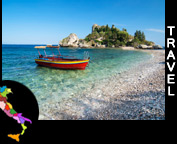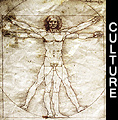One of the questions that comes up often in the messages we receive from our visitors is: "How should I dress while traveling in Italy ?" There is no short answer to this question. The truth is that there is not something like a formal dress code in Italy, but we can surely give you some tips on how to dress so as to not look out of place when you are in Italy. Dressing as Italians do is not just a matter of respecting a dress code, but more a question of security; in bigger cities it may be more secure not to look too obviously like a tourist.
Italians are very fashion-conscious, but more importantly, they are very respectful of traditions and customs, which translates in the way they dress. This means there is no such thing as an Italian dress code, but rather imperceptible, tacit rules, which may remain unnoticed for the untrained eye.
The first thing to know is that Italians adapt the way they dress to the moment of the day, the occasion, and the site or place they are visiting. Some typical examples: no shorts for men in the evening and no tank tops or other shoulder-less clothing when entering a church or cathedral. For the same reason covered shoulders, no shorts or mini skirts are recommended when visiting the Vatican.
Showing respect also means that you dress up according to the level of the place or people you are visiting, even if there is no formal dress code mentioned. Explicit dress codes are relatively rare in Italy, because people usually know how to dress according to the place. This means that in finer restaurants and in luxury hotels you are expected to dress accordingly. Not doing so may be interpreted as offensive or showing disrespect to the place and the other clients. It may also be interpreted as a sign that you expect poor service and you may well end up receiving that as a consequence. This is relatively rare, though; in most cases Italians are just too polite to show any reaction or different treatment.
The same goes when you are invited at a (formal) dinner at a friend's home. Of course, it all depends on the type of dinner you are invited to and the level of intimacy you have with your friends, but even close friends will interpret an effort to dress nicely as a mark of respect.
Some clothing combinations may also look funny to Italians, like wearing white socks under trousers or wearing socks with sandals. Reversely, some pieces of clothing always require their complement, for example, closed shoes always need socks (except moccasin-style shoes or yachting shoes). You will find more of these tacit "dress rules" in our list of dos and dont's below. Of course, most of these seem quite obvious and, at the end of the day, being on vacation also means dressing just the way you want. However, for those of you who are looking for some hints so as to not stick out in the crowd and become an obvious target for pick pockets, muggers and beggars, here is a list with some "do's and don'ts". Most of these rules are also valid in other European countries such as France, Spain and Portugal.
Note: this list is certainly not to be interpreted as a formal dress code. The most important thing is to feel comfortable, especially when you are on vacation. The list of hints is meant for travelers to Italy and expatriates who feel most comfortable when they look "like they fit in".
Do's:
- in case of doubt it is always better to over-dress for a specific situation than the opposite. Remember that for Italians style and elegance is translated by the overall picture, NOT by some specific attires, such as a tie. Wearing a tie on a jeans or an unperfectly ironed shirt is worse than wearing no tie in a classy suit. The first thing Italians will look at are your shoes and then the quality of the fabrics, rather than what they represent.
- Italian women always wear make-up (usually the kind of make-up that looks very natural) and have their hair, eyebrows and nails done (especially toe nails), but they hardly wear perfume.
- you can wear jeans (even in more formal situations), as long as they are combined with an elegant jacket or stylish accessories. They should be well-fitting and stylish. Never ever wear a tie with jeans, though.
- for men, always wear socks in closed shoes. The only exception to this are moccasin-style shoes or yachting shoes, but even here Italians will usually wear a type of socks specifically adapted to this kind of shoes, called fantasmini ('invisible' or very short socks).
- Rome and Milan being fashion capitals, designer labels are always immediately recognizable and considered a sign of elegance (unless it is over-done).
- men wearing a suit should know that shirts without brest pockets and collar buttons are considered more elegant.
Dont's (remember that in Italy everything is possible fashion-wise. These "dont's" are only intended for travelers who prefer to remain "on the safe side").
- avoid sweat suits or sports shoes in the city, except if you are doing sports. The only exception to this are very stylish, branded sports shoes, but these are usually not flashy and should always look VERY new.
- no tank tops or other shoulder-less clothing in churches or sacred places. It is always a good idea to cover up your shoulders when entering a church. Entering a sacred place with sleeveless or shoulder-less clothing may be interpreted as an insult to the sacred.
- no oversized shirts or baggy trousers. Italians always wear appropriately sized clothing (younger Italians even like to dress slightly smaller than their actual size).
- no fanny packs or belt packs.
- no over-sized T-shirts, especially not those with big, flashy pictures on them.
- no extra short shorts for men (especially the sports type), unless you are heading to the beach or vacationing in a beach resort and even then prefer them longer (knee-level, bermuda shorts type). An absolute no-no are running shorts or wearing shorts in the evening ! Also avoid wearing socks with shorts.
- no flip-flops or thongs in the bigger cities (this is a tricky one, because some thongs can look really elegant, so it does a little depend on the type).
- no socks in sandals or open shoes
- no open shoes for men in the evening (unless, maybe, in a beach resort).
- a big NO-NO are white socks with trousers ! Socks should always be as discrete as possible, preferably black or blend in either with the color of the trousers or that of the shoes. White socks are for sports only!
- no short-sleeved shirts for men in more formal places. An absolute no-no is a tie with short-sleeved shirts ! Summer shirts (made of thinner cotton or flax) are OK in all occasions, but not with a tie ! A tie always requires a shirt with a hard, well-defined collar.
- no bright, flashy colors. Italians do wear bright colors, but in specific combinations and not at all times. Some colors that are typically very popular in some countries look very strange to Italians as colors for clothes, such as mustard yellow, petrol blue, bottle green and dull bordeaux red. So, in case of doubt and to remain on the safe side, prefer earthy tones, or black, marine blue, cream and white. Some red and other stronger colors are fine, but too much red, purple or flashy color combinations may soon look out of place. Pastel colors such as lilac, pastel green, pastel rose and salmon are best reserved for the Summer. The only exception to this are all shades of beige, camel, broken white, ivory and cream white and grey which can be worn all year round.
.
.
.
.
.
.
.










